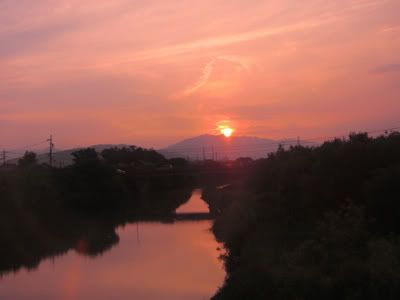The plan for the Ise trip is as follows: Firstly we will leave at 7.55am and take the 8.10am bus from Tokadai Centre to the Meitetsu Bus Centre. From there we will transit to the direct train to Ise. There are several train departing from Nagoya station per hour, but of course with different rates depending on the speed and seat reservation. We opted for the 9.30am train, giving us a 20mins buffer from the time we alight to the time of boarding.
The total train journey time is 1hr 30mins, but it was delayed by 15mins (which is rare for Japanese trains). Along the way, it passes by several towns like Yokkaichi, Matsuzaya and so on. Yokkaichi is famous for its largest semicon fab in the world and Matsuzaya has Japan's most famous beef. Rice fields also line the tracks of the railway as can be seen from one such field below.
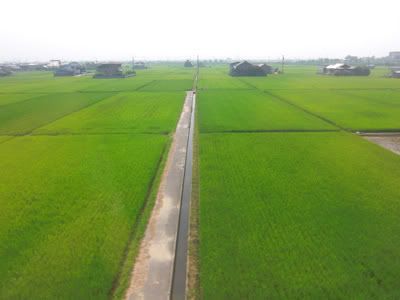
We arrived at Ise City station at 11.15am. This is the first sight that greeted us when we walked out of the station - a giant shrine lamp.
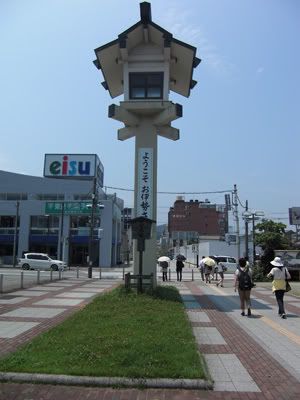
The first stop for the day is the Outer Shrine (内宮). It is just a 5mins walk from the station. The weather for the day is pretty hot. Thankfully the paths leading to the shrines are all sheltered by trees. Here is the bridge leading to the shrine compound.
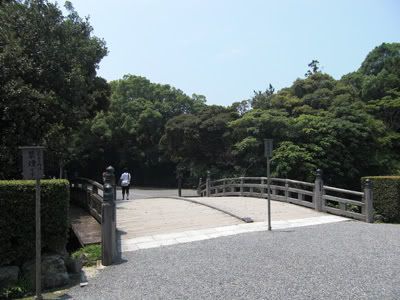
Before visitors enter the shrines, it is a custom to wash their hands and mouth with the water pool next to the entrance. It is a purification process.
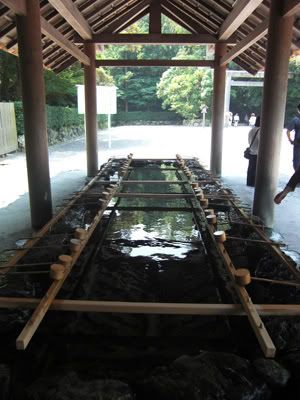
A large torii gate leading to the shrine.
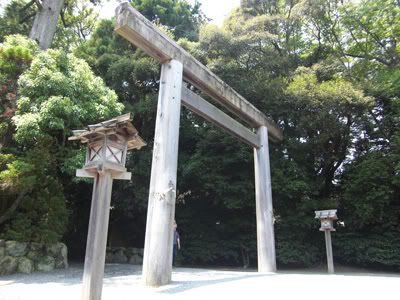
A shrine office.
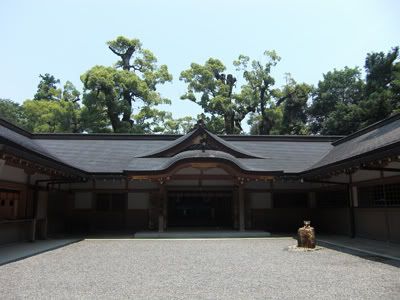
And here we are, the main hall of the inner shrine. No photographs are allowed past the gates. And visitors are also not allow to enter beyond the main entrance. So the most we can do is look on from the outside. The shrines architecture is based on traditional Japanese architecture and has not been influenced by Chinese/Buddhist architecture. It is said the shrines are rebuilt every 20 years. There is an empty plot of land just next to the current shrine which is where the next shrine will be built.
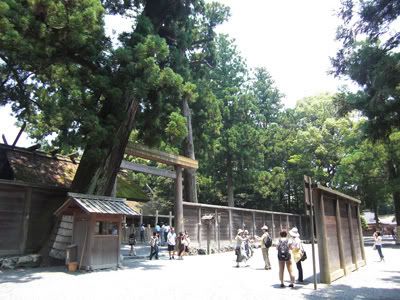
In the outer shrines, there are many shrines dedicated to the many deities. This is one of the other shrines surrounding the main hall. The architecture is really different from most of the shinto shrines I see elsewhere in Japan. I heard these buildings are built without using nails and are joined together.
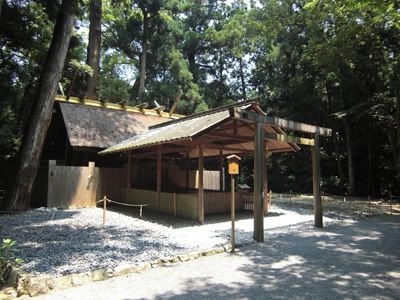
After we have visited all the sights, we walk to the Tourist Information Counter which is just opposite the Outer Shrine entrance. We bought the one day CAN bus pass from there. It cost 1,000Yen and allow us unlimited rides on the bus.
We were told to take bus number 2 which is directly in front of the Tourist Information Counter to the Inner Shrine (内宮). The journey takes around 20mins and we were fortunate to board the bus immediately without waiting.
Just next to the Inner Shrine entrance is the Oharaimachi (お払い町). It is actually a traditional looking street selling lots of food and souvenirs.
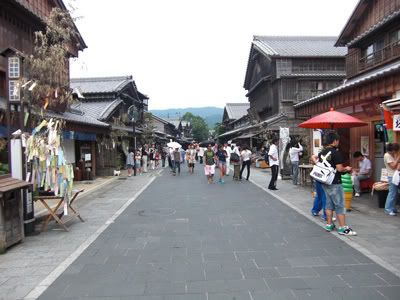
Ise is famous for its prawn crackers. It looks like lobsters but they are actually prawns.
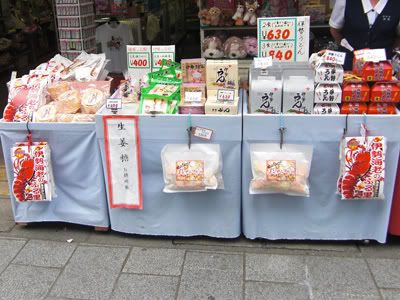
As it is lunch time, we have to pick amongst the many restaurants that line the old street. We just choose one that do not have that many people. I ordered the Ise Claypot (伊勢釜めし) which cost around 900Yen.
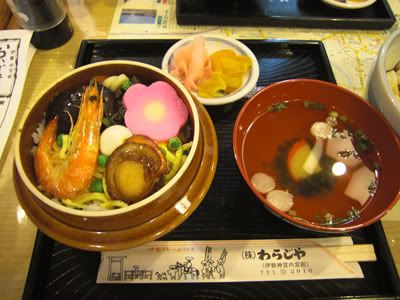
And the Ise Udon (伊勢うどん), around 400Yen. I think I ate too much for lunch.
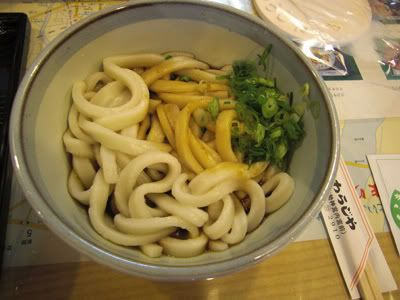
We walked down the street and came upon this stunning sight in the middle of the street. It is a bridge leading to a town on the opposite end of the river.

On the bridge, I noticed a man standing at the other side of the river signaling to the ducks to cross and climb up the stairs.
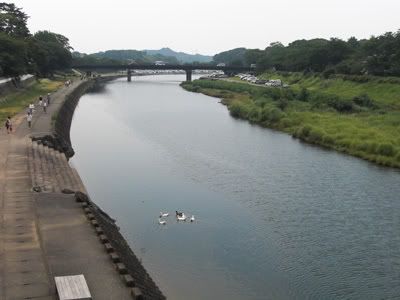
I have been wanting to buy a kendama (see the picture below) for a few weeks now. After watching Doraemon and some japanese game shows and drama, was quite interested to try it out. Coincidentally, the old street sells all variety of Kendama, so I just bought one for around 900Yen.
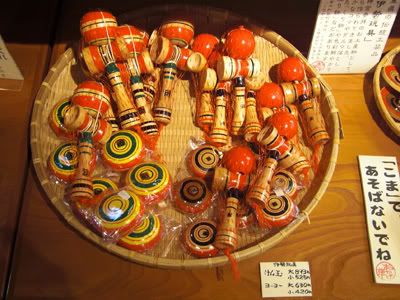
There is also a Taiko performance round the corner every hour today. So we went there and watch the 10minutes Taiko performance. I have recorded the video below.
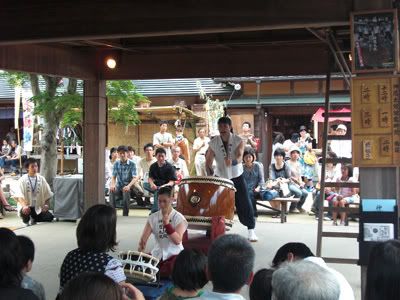
After the street, we are off to the Inner shrine. Here is a angled photography view of the Torii gate. I just follow Park-san perspective and took the same photo.
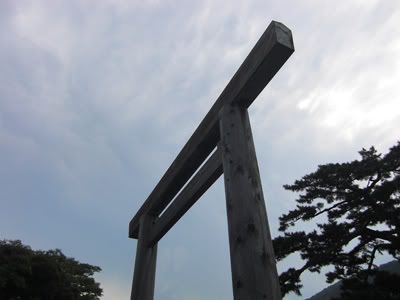
A long bridge leading to the shrine compound.
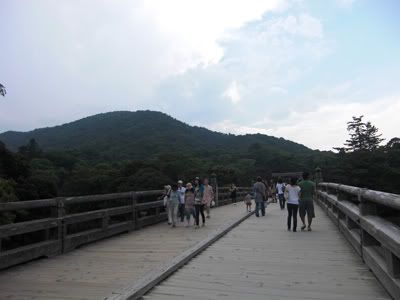
Here is Park-san and me.
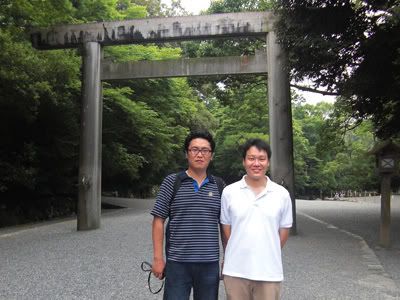
The offices of the Inner Shrine.

The main hall of the shrine. Like the Outer shrine, no photographs are allowed in there and visitors are not able to go beyond the main entrance.
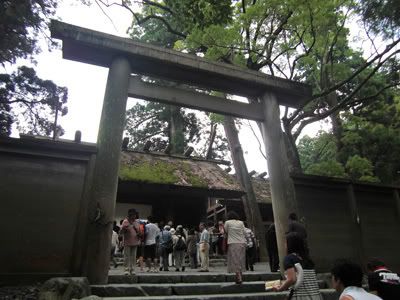
From the inner shrine, we took a bus from the Oharaimachi street bus stop. There are no buses departing from the Inner Shrine bus stop. It is thus important to note the bus departure timing cos the frequency is every 30mins. We took the 3.54pm bus from the Oharaimachi street bus stop.
Our next destination is Futami-no-ura (二見の浦) which takes 25mins by bus. Here is famous for its Meoto-Iwa (夫婦岩) - Wedded Rocks. The rocks are joined by a large straw rope in the middle of the sea.
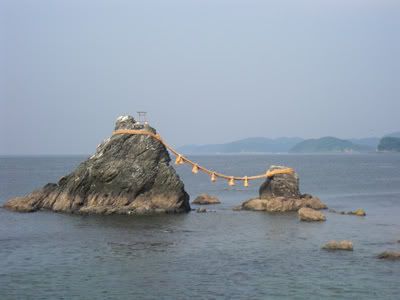
There is a shrine around the rocks.

A bird perched on a rock.
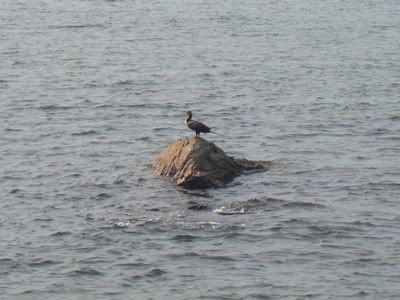
The many well-wishes written by visitors to the shrine.
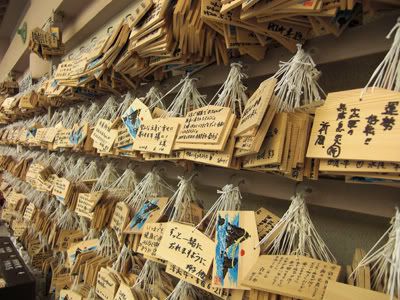
We took the last bus and last train back to Nagoya. The last bus departs from Futami at 4.53pm and arrives at the Ise station (Outer shrine) at 5.45pm. From there is a 5mins walk to the station to catch the last 6.02pm budget train. But we opted for the seat reservation train which comes up to 2,600Yen. Once a while must travel in luxury.
On the way back, we took a few stunning photos of the sunset.
